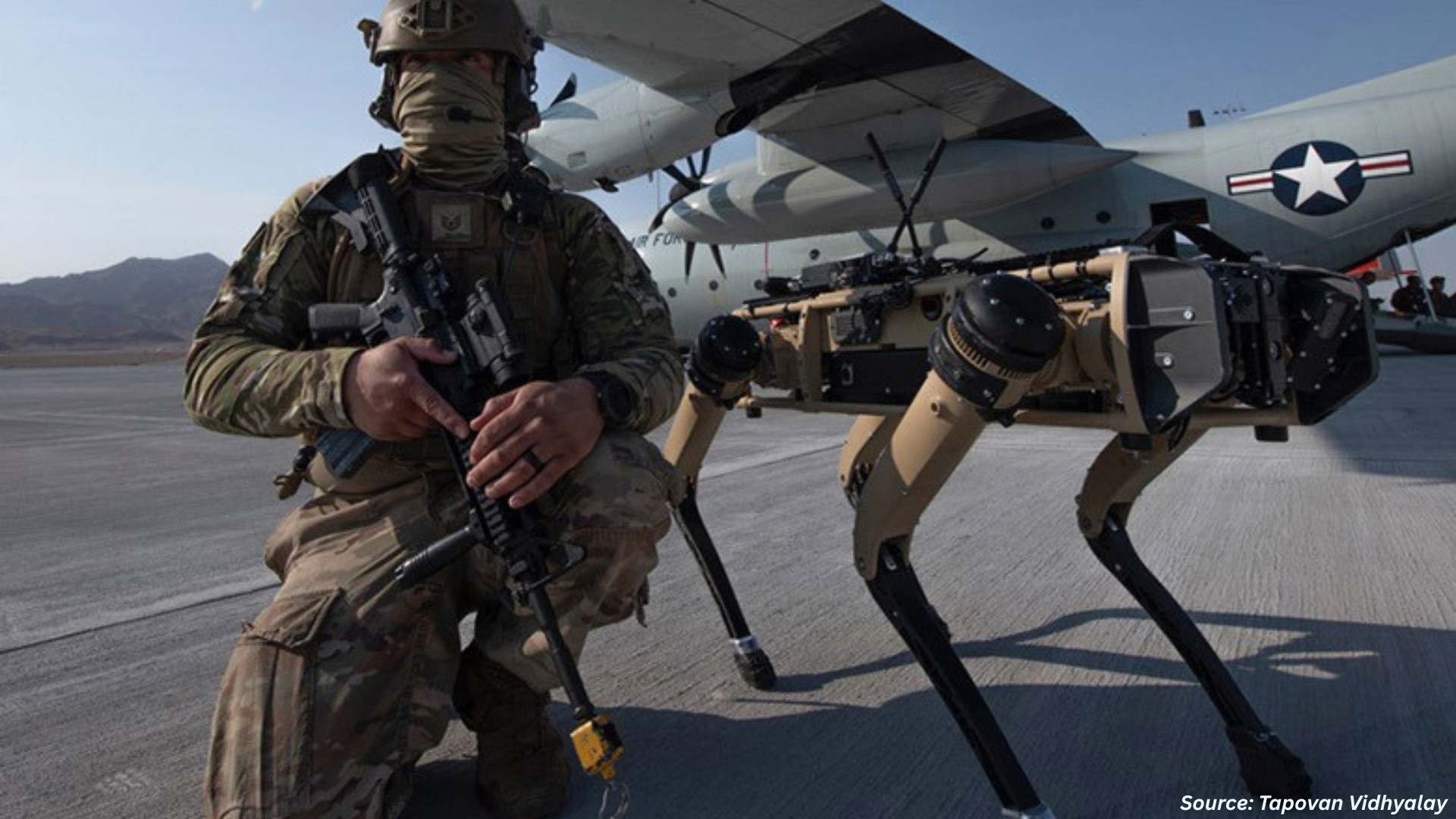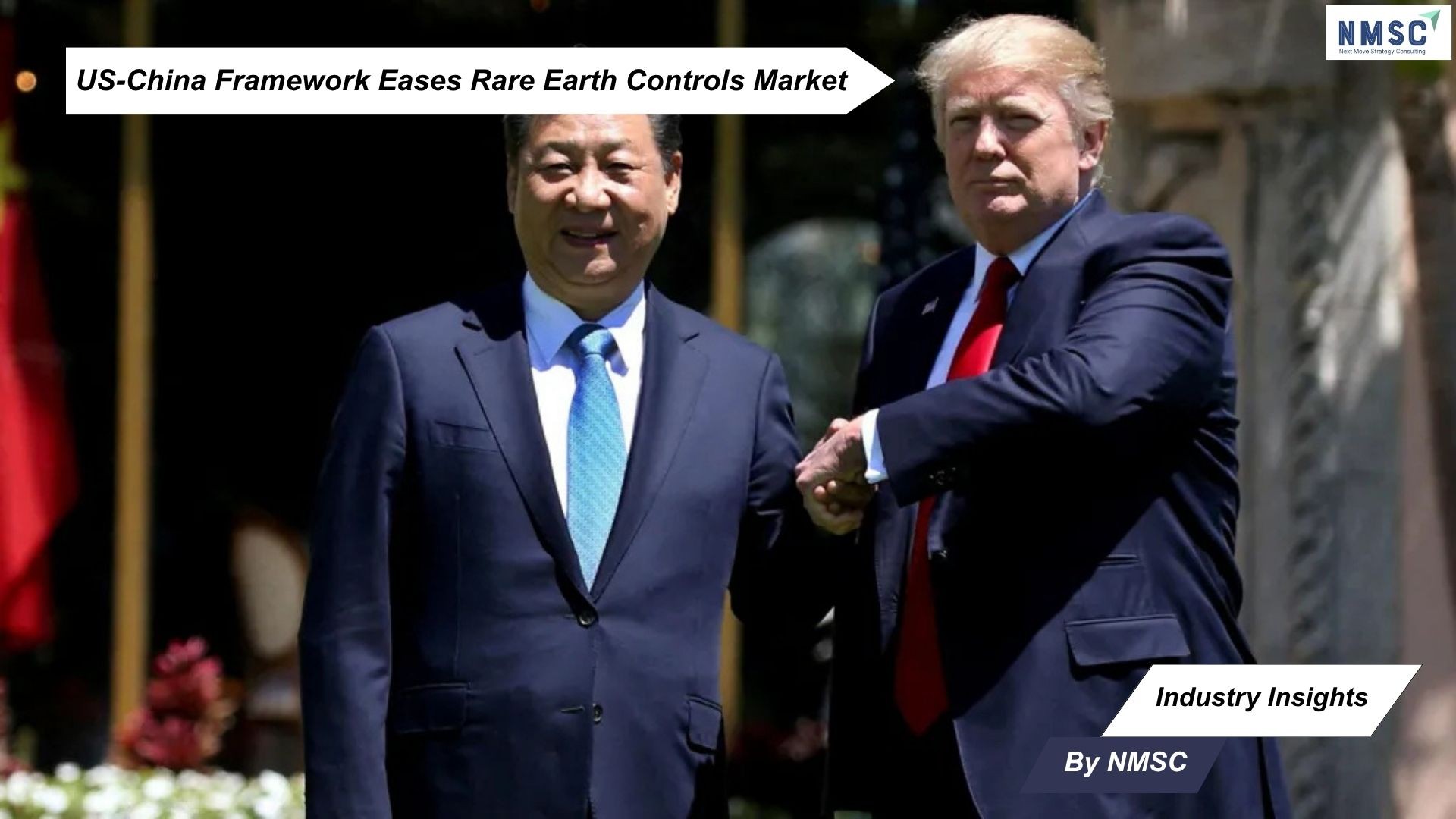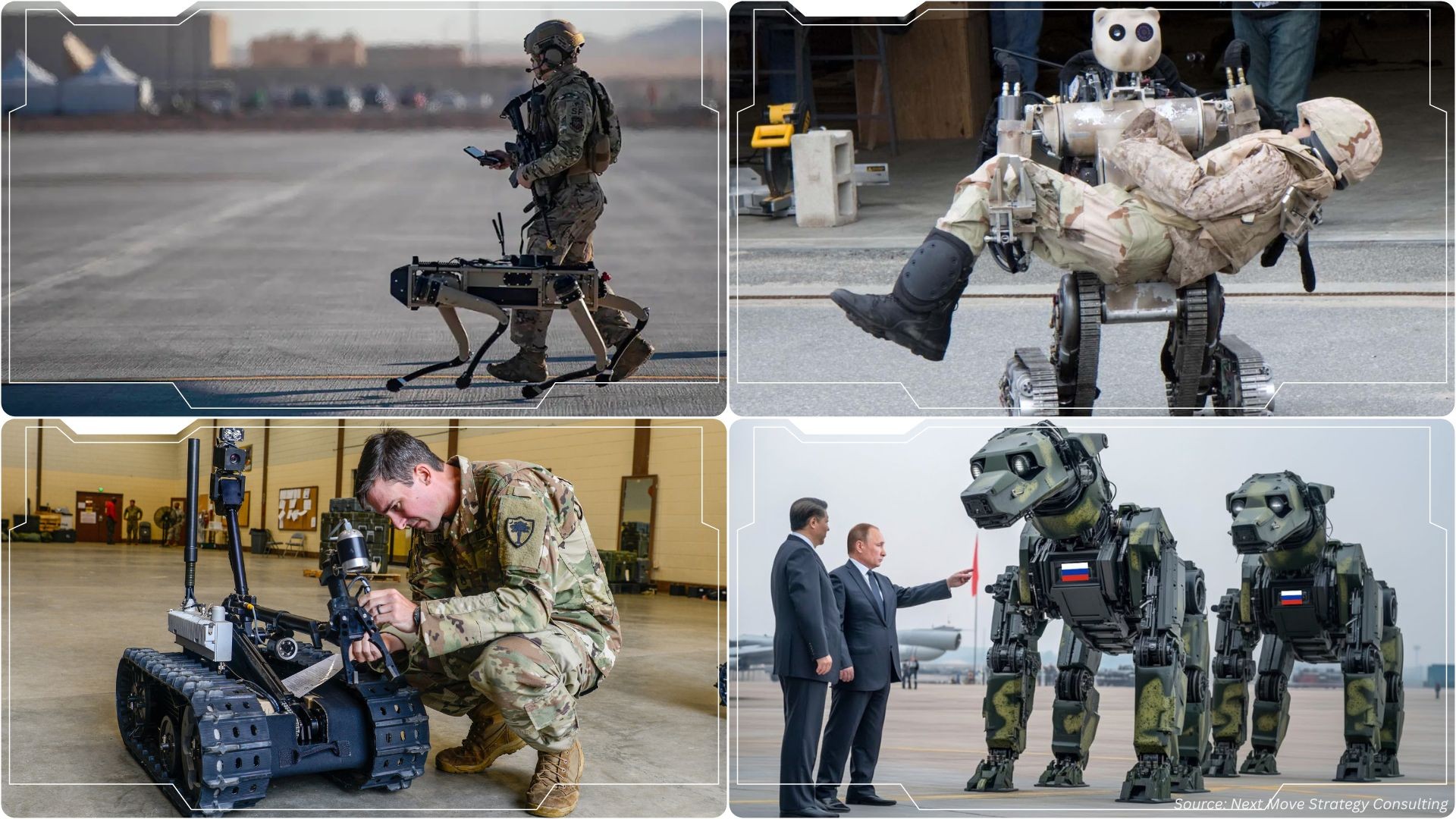China’s Next-Gen Combat Robots: Signals for the Military Robots Market
Published: 2025-10-06

Lede
China’s unveiling of new autonomous combat robots – including missile-firing drones, wolf-like quadrupeds, and even turtle-inspired robotic platforms – underscores the rapid militarization of robotics. These developments, highlighted across recent demonstrations and media reports, point to a Military Robots Market that is not just about defense procurement but also about shifting doctrines, ethical debates, and technological arms races.
From Wolves to Turtles: China’s Robot Army Expands
In August 2025, China showcased its latest “wolf robots” during a live military drill. These four-legged machines demonstrated agility and tactical flexibility, designed to carry payloads, scout terrains, and potentially accompany infantry in hostile zones. According to China's Global Times, the 70-kg wolf robot is "utility quadrupedal" robot that can neutralise targets, and conduct reconnaissance missions. It is also capable of transporting equipment and conducting support missions. Weeks later, reports emerged of a missile-firing, turtle-shaped robot capable of amphibious operations – blending stealth with firepower.
China’s DIY Innovation and Military Implications
While the “missile-firing turtle robot” that went viral online may have originated as a private project, its symbolism cannot be dismissed. It dovetails neatly with China’s broader trajectory in next-generation military innovation.
Over the past decade, Beijing has aggressively advanced technologies that blur the boundary between experimental prototypes and battlefield deployment. Examples include:
-
Hypersonic platforms: The DF-ZF glider, capable of speeds reportedly exceeding Mach 5, designed to evade traditional missile defenses.
-
AI-powered drone swarms: Inspired by insect colonies, these systems can coordinate attacks or surveillance missions at scale.
-
Underwater drones: Deployed for reconnaissance and sabotage in contested maritime zones.
-
Exoskeletons for soldiers: Tested to enhance load-bearing capabilities in high-altitude or extreme terrain.
-
Unmanned stealth aircraft: The GJ-11 Sharp Sword already demonstrates Beijing’s ability to field next-gen autonomous air power.
Viewed through this lens, the turtle robot is more than a novelty. It represents how even grassroots or hobbyist innovation can align with state-level ambitions, feeding into what strategists describe as China’s evolving doctrine of hybrid warfare. This doctrine seeks to integrate low-cost, versatile autonomous systems alongside sophisticated platforms, creating layered advantages in surveillance, defense, and attack.
Taken together, these announcements signal Beijing’s intent to expand robotic capabilities across land, sea, and air. Analysts suggest such platforms may form a layered robotic ecosystem in the near future, complementing traditional armed forces with machine-led reconnaissance and combat support.
Strategic Context: Preparation for Next-Gen Warfare
Observers have framed these unveilings as part of China’s long-term preparation for “next-gen warfare,” where AI-enabled systems reduce risks to human soldiers and create asymmetric advantages. Beyond tactical roles, these robots symbolize a shift toward “machine-first doctrine,” where autonomous and semi-autonomous systems could spearhead early-stage missions before human deployment.
The U.S. and its allies are also ramping up investments in robotics, drone swarms, and AI-enabled defense software, fueling what some experts call a “robotics arms race.” For global defense contractors, the visibility of Chinese advancements is likely to accelerate R&D spending and procurement cycles in other regions.
Next Move Strategy Consulting – Opinion, Impact, and Near-Term Prospects
While many discussions on the Military Robots Market center around procurement value, Next Move Strategy Consulting emphasizes several broader impacts and prospects:
-
Doctrinal Shifts: The integration of wolf-robots and amphibious missile platforms illustrates how robotics are redefining combat roles. Armies that adapt doctrines to integrate man–machine teaming will gain operational flexibility beyond traditional infantry or armor deployments.
-
Supply Chain Implications: Building and sustaining combat-ready robots requires advanced semiconductors, AI chips, ruggedized batteries, and resilient communication systems. This interlinks defense supply chains with commercial high-tech sectors, raising new dependencies and opportunities.
-
Ethical and Regulatory Pressures: As robots move closer to offensive combat roles, international debate around “killer robots” will intensify. Companies entering the market must anticipate regulatory scrutiny, not just technical challenges.
-
Allied Collaboration & Export Prospects: Defense robotics is no longer a siloed national program. The ability to export interoperable systems to allies – for instance, NATO countries seeking counterbalance capabilities – will open strategic markets for manufacturers.
-
Civil-to-Military Spillover: Many of the technologies being deployed – quadruped locomotion, amphibious robotics – have parallel applications in disaster response, logistics, and infrastructure surveillance. Firms positioned in both defense and civilian markets can leverage dual-use opportunities.
Practical Signals for Stakeholders
For defense contractors and policymakers, the rise of China’s military robots signals urgency. Investors should watch companies building rugged AI chips, secure comms, and modular payload designs, as these will be core differentiators. Policymakers, meanwhile, must navigate the balance between accelerating indigenous robotics programs and shaping ethical guardrails for their deployment.
Conclusion
China’s demonstrations of missile-firing turtle robots and wolf-like combat quadrupeds are more than spectacles; they are signals of an accelerating shift in the Military Robots Market. The trajectory points toward man–machine integration, new operational doctrines, and heightened geopolitical competition. For businesses, investors, and defense leaders, the next five years will be about not just who builds the most advanced robot, but who can integrate, scale, and govern these systems responsibly.
About Next Move Strategy Consulting:
Next Move Strategy Consulting is a premier market research and management consulting firm that has been committed to provide strategically analysed well documented latest research reports to its clients. The research industry is flooded with many firms to choose from, what makes Next Move different from the rest is its top-quality research and the obsession of turning data into knowledge by dissecting every bit of it and providing fact-based research recommendation that is supported by information collected from over 500 million websites, paid databases, industry journals and one on one consultations with industry experts across a diverse range of industry sectors. The high-quality customized research reports with actionable insights and excellent end-to-end customer service help our clients to take critical business decisions that enables them to move beyond time and have competitive edge in the industry.
We have been servicing over 1000 customers globally that includes 90% of the Fortune 500 companies over a decade. Our analysts are constantly tracking various high growth markets and identifying hidden opportunities in each sector or the industry. We provide one of the industry’s best quality syndicate as well as custom research reports across 10 different industry verticals. We are committed to deliver high quality research solutions in accordance to your business needs. Our industry standard delivery solutions that ranges from the pre consultation to after-sales services, provide an excellent client experience and ensure right strategic decision making for businesses.
For more information please contact:
Next Move Strategy Consulting
5th Floor 867
Boylston St, STE 500,
Boston, MA 02116, U.S.
E-Mail: [email protected]
Direct: +18577585017
Website: www.nextmsc.com
About the Author
 Joydeep Dey is an SEO Executive, Content Writer, and AI enthusiast with over 2½ years of experience in digital marketing and artificial intelligence. He specializes in crafting smart SEO strategies, creating engaging content, and exploring AI-powered solutions that boost online visibility and audience engagement. Outside of work, you’ll often find Joydeep exploring new gadgets, binge-watching a good series, or just wandering around for fresh inspiration.
Joydeep Dey is an SEO Executive, Content Writer, and AI enthusiast with over 2½ years of experience in digital marketing and artificial intelligence. He specializes in crafting smart SEO strategies, creating engaging content, and exploring AI-powered solutions that boost online visibility and audience engagement. Outside of work, you’ll often find Joydeep exploring new gadgets, binge-watching a good series, or just wandering around for fresh inspiration.
About the Reviewer
 Sanyukta Deb is a seasoned Content Writer and Team Leader in Digital Marketing, known for her expertise in crafting online visibility strategies and navigating the dynamic digital landscape. With a flair for developing data-driven campaigns and producing compelling, audience-focused content, she helps brands elevate their presence and deepen user engagement. Beyond her professional endeavors, Sanyukta finds inspiration in creative projects and design pursuits.
Sanyukta Deb is a seasoned Content Writer and Team Leader in Digital Marketing, known for her expertise in crafting online visibility strategies and navigating the dynamic digital landscape. With a flair for developing data-driven campaigns and producing compelling, audience-focused content, she helps brands elevate their presence and deepen user engagement. Beyond her professional endeavors, Sanyukta finds inspiration in creative projects and design pursuits.

















Add Comment